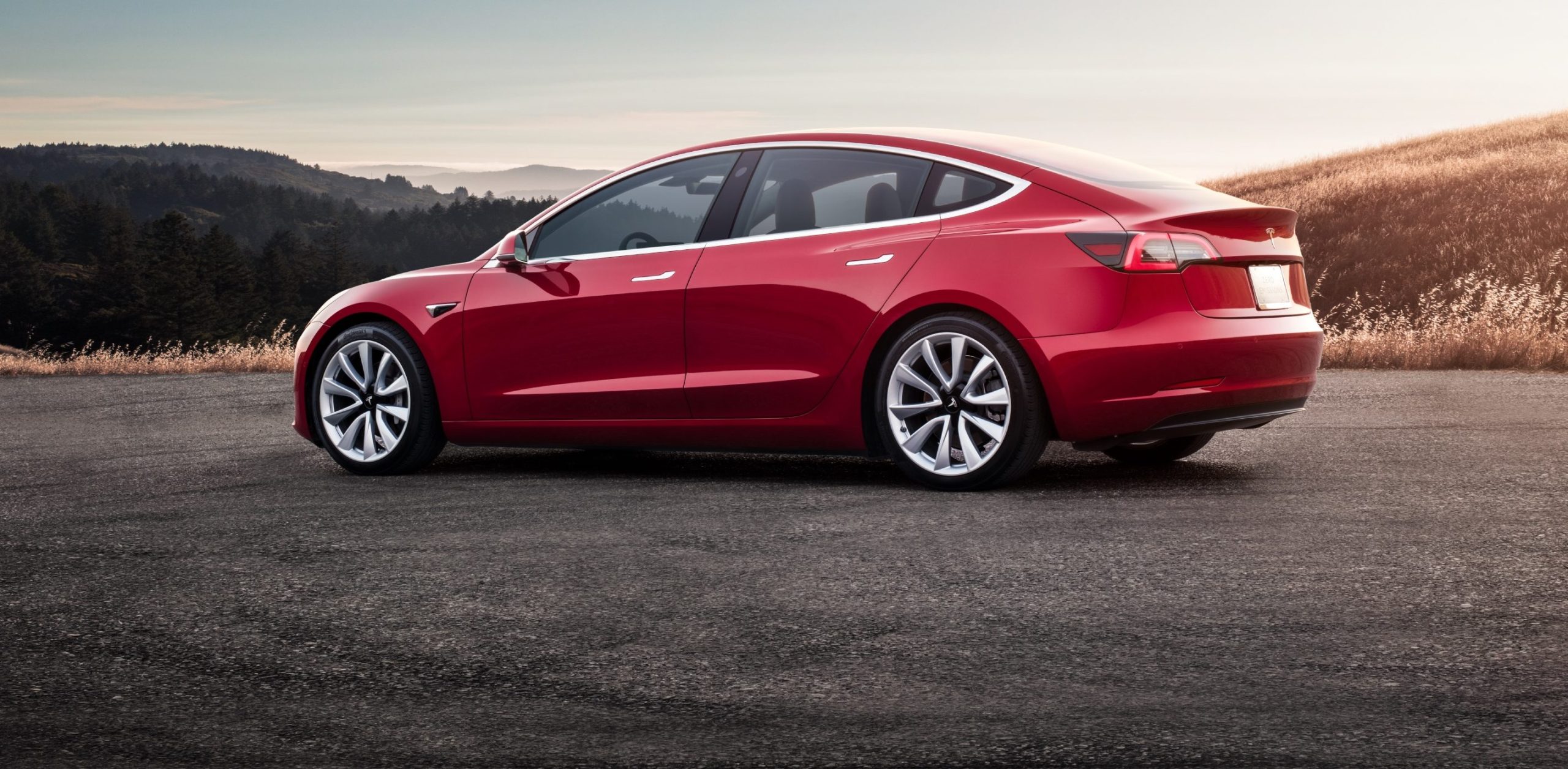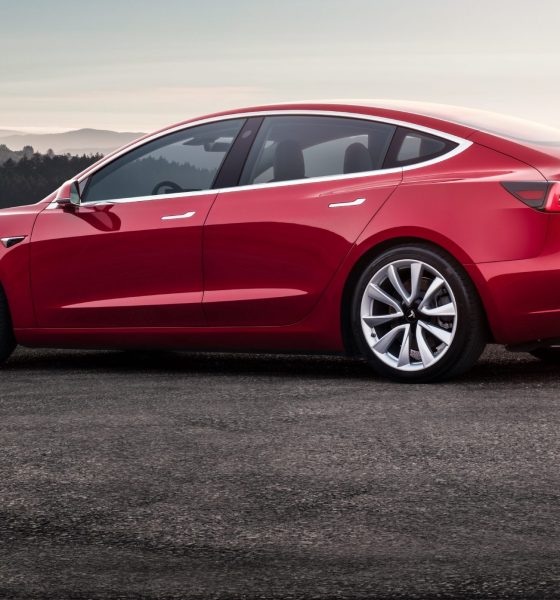

Investor's Corner
Tesla’s (TSLA) Q2 2019 earnings call with Elon Musk set for July 24
Tesla (NASDAQ:TSLA) has announced that it would be posting its financial results for Q2 2019 after the market closes on Wednesday, July 24, 2019. The company would be issuing a brief advisory with a link to its Q2 2019 Update Letter, which will be accessible from Tesla’s Investor Relations website. A live Q&A session is set for 2:30 p.m. Pacific Time (5:30 p.m. Eastern Time) to discuss the electric car and energy company’s financial results and outlook.
Analysts polled by FactSet currently expect Tesla to report an adjusted loss of $0.45 per share on sales of $6.6 billion in the second quarter, which compares favorably with an adjusted loss of $3.06 per share on sales of $4 billion in Q2 2018. So far, the rather early earnings call date appears to have been received well by the market, with Tesla shares trading 1.81% at $242.91 per share as of writing.
Tesla’s financial results for the second quarter are up for question, considering that Elon Musk has mentioned that Q2 2019 could see a loss once more. Nevertheless, expectations are high that Tesla’s finances in Q2 will be more palatable compared to the company’s first-quarter results, which showed a loss of $702 million, thanks in part to delivery difficulties to international markets such as Europe and China. These challenges were expected to have been mostly addressed in the second quarter, paving the way for a potential return to profitability in Q3 2019.
Quite interestingly, Tesla’s rather early second-quarter earnings call announcement comes amidst news of challenges being faced by companies considered as the Silicon Valley-based carmaker’s rivals in the EV market. Among these is NIO, widely called the “Tesla of China,” which is seeing some roadblocks in its momentum. NIO had a promising start in 2018, but recent months have been difficult for the company, as reflected in the electric car maker’s slumping sales, the departure of US CEO Padmasree Warrior, and concerns about the quality of the company’s vehicles. These challenges have been reflected in NIO’s stock price, which has declined 42% since its IPO in September.
Fellow Chinese EV startup Seres (formerly known as SF Motors), at one point also deemed a potential rival to Tesla, was racked with a round of layoffs for its US staff. The company had employed about 300 people in Santa Clara as it planned a potential US launch for its first electric vehicle, the all-electric SF5 SUV. But at a recent staff meeting, the company announced that it would be laying off 90 employees at its US headquarters in Santa Clara.
BMW, which is trying to get its momentum back in the electric car market, also faces some challenges with its freshly unveiled Mini Electric. The vehicle, which actually looks pretty fun, has notably underwhelming specs, with a paltry 146 miles of range, a starting price of $35,000, and technology that’s primarily based on the aging i3, a competitor of the early versions of the Model S. This is far below the bar set by vehicles like the Tesla Model 3 Standard Plus, which starts just below $40,000, but has 240 miles of range and standard features like Autopilot.
These challenges faced by young companies like NIO and veterans like BMW show that the electric car segment, which Tesla has survived in for 16 years now, is becoming a very tough business to crack. With other companies like Kia and Hyundai coming up with low-priced EVs that are bang for the buck like the Niro EV and Kona Electric, and with Tesla widening its lead over the competition with the Model 3, the electric car segment is only bound to get more competitive. It wouldn’t be surprising to see companies with weaker hands get shaken off in the coming years.
Disclosure: I have no ownership in shares of TSLA and have no plans to initiate any positions within 72 hours.

Investor's Corner
Tesla stock closes at all-time high on heels of Robotaxi progress

Tesla stock (NASDAQ: TSLA) closed at an all-time high on Tuesday, jumping over 3 percent during the day and finishing at $489.88.
The price beats the previous record close, which was $479.86.
Shares have had a crazy year, dipping more than 40 percent from the start of the year. The stock then started to recover once again around late April, when its price started to climb back up from the low $200 level.
This week, Tesla started to climb toward its highest levels ever, as it was revealed on Sunday that the company was testing driverless Robotaxis in Austin. The spike in value pushed the company’s valuation to $1.63 trillion.
Tesla Robotaxi goes driverless as Musk confirms Safety Monitor removal testing
It is the seventh-most valuable company on the market currently, trailing Nvidia, Apple, Alphabet (Google), Microsoft, Amazon, and Meta.
Shares closed up $14.57 today, up over 3 percent.
The stock has gone through a lot this year, as previously mentioned. Shares tumbled in Q1 due to CEO Elon Musk’s involvement with the Department of Government Efficiency (DOGE), which pulled his attention away from his companies and left a major overhang on their valuations.
However, things started to rebound halfway through the year, and as the government started to phase out the $7,500 tax credit, demand spiked as consumers tried to take advantage of it.
Q3 deliveries were the highest in company history, and Tesla responded to the loss of the tax credit with the launch of the Model 3 and Model Y Standard.
Additionally, analysts have announced high expectations this week for the company on Wall Street as Robotaxi continues to be the focus. With autonomy within Tesla’s sights, things are moving in the direction of Robotaxi being a major catalyst for growth on the Street in the coming year.
Elon Musk
Tesla needs to come through on this one Robotaxi metric, analyst says
“We think the key focus from here will be how fast Tesla can scale driverless operations (including if Tesla’s approach to software/hardware allows it to scale significantly faster than competitors, as the company has argued), and on profitability.”

Tesla needs to come through on this one Robotaxi metric, Mark Delaney of Goldman Sachs says.
Tesla is in the process of rolling out its Robotaxi platform to areas outside of Austin and the California Bay Area. It has plans to launch in five additional cities, including Houston, Dallas, Miami, Las Vegas, and Phoenix.
However, the company’s expansion is not what the focus needs to be, according to Delaney. It’s the speed of deployment.
The analyst said:
“We think the key focus from here will be how fast Tesla can scale driverless operations (including if Tesla’s approach to software/hardware allows it to scale significantly faster than competitors, as the company has argued), and on profitability.”
Profitability will come as the Robotaxi fleet expands. Making that money will be dependent on when Tesla can initiate rides in more areas, giving more customers access to the program.
There are some additional things that the company needs to make happen ahead of the major Robotaxi expansion, one of those things is launching driverless rides in Austin, the first city in which it launched the program.
This week, Tesla started testing driverless Robotaxi rides in Austin, as two different Model Y units were spotted with no occupants, a huge step in the company’s plans for the ride-sharing platform.
Tesla Robotaxi goes driverless as Musk confirms Safety Monitor removal testing
CEO Elon Musk has been hoping to remove Safety Monitors from Robotaxis in Austin for several months, first mentioning the plan to have them out by the end of 2025 in September. He confirmed on Sunday that Tesla had officially removed vehicle occupants and started testing truly unsupervised rides.
Although Safety Monitors in Austin have been sitting in the passenger’s seat, they have still had the ability to override things in case of an emergency. After all, the ultimate goal was safety and avoiding any accidents or injuries.
Goldman Sachs reiterated its ‘Neutral’ rating and its $400 price target. Delaney said, “Tesla is making progress with its autonomous technology,” and recent developments make it evident that this is true.
Investor's Corner
Tesla gets bold Robotaxi prediction from Wall Street firm
Last week, Andrew Percoco took over Tesla analysis for Morgan Stanley from Adam Jonas, who covered the stock for years. Percoco seems to be less optimistic and bullish on Tesla shares, while still being fair and balanced in his analysis.

Tesla (NASDAQ: TSLA) received a bold Robotaxi prediction from Morgan Stanley, which anticipates a dramatic increase in the size of the company’s autonomous ride-hailing suite in the coming years.
Last week, Andrew Percoco took over Tesla analysis for Morgan Stanley from Adam Jonas, who covered the stock for years. Percoco seems to be less optimistic and bullish on Tesla shares, while still being fair and balanced in his analysis.
Percoco dug into the Robotaxi fleet and its expansion in the coming years in his latest note, released on Tuesday. The firm expects Tesla to increase the Robotaxi fleet size to 1,000 vehicles in 2026. However, that’s small-scale compared to what they expect from Tesla in a decade.
Tesla expands Robotaxi app access once again, this time on a global scale
By 2035, Morgan Stanley believes there will be one million Robotaxis on the road across multiple cities, a major jump and a considerable fleet size. We assume this means the fleet of vehicles Tesla will operate internally, and not including passenger-owned vehicles that could be added through software updates.
He also listed three specific catalysts that investors should pay attention to, as these will represent the company being on track to achieve its Robotaxi dreams:
- Opening Robotaxi to the public without a Safety Monitor. Timing is unclear, but it appears that Tesla is getting closer by the day.
- Improvement in safety metrics without the Safety Monitor. Tesla’s ability to improve its safety metrics as it scales miles driven without the Safety Monitor is imperative as it looks to scale in new states and cities in 2026.
- Cybercab start of production, targeted for April 2026. Tesla’s Cybercab is a purpose-built vehicle (no steering wheel or pedals, only two seats) that is expected to be produced through its state-of-the-art unboxed manufacturing process, offering further cost reductions and thus accelerating adoption over time.
Robotaxi stands to be one of Tesla’s most significant revenue contributors, especially as the company plans to continue expanding its ride-hailing service across the world in the coming years.
Its current deployment strategy is controlled and conservative to avoid any drastic and potentially program-ruining incidents.
So far, the program, which is active in Austin and the California Bay Area, has been widely successful.








